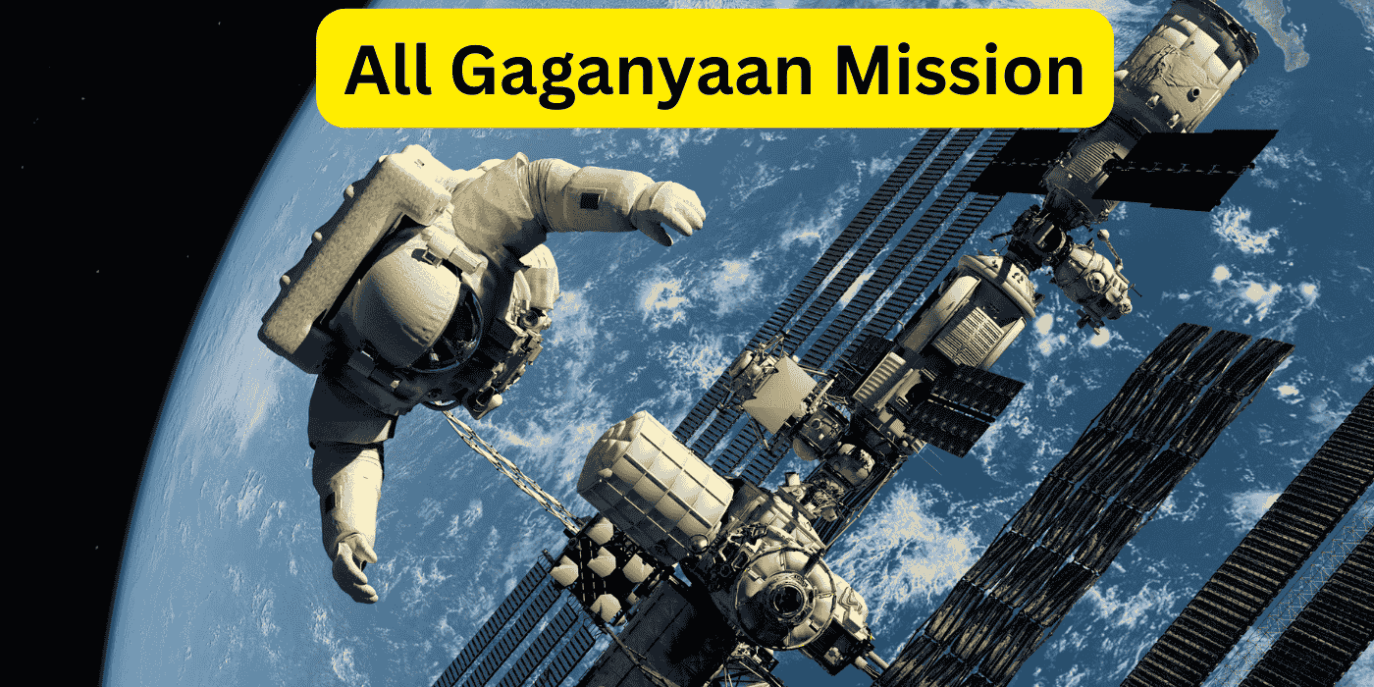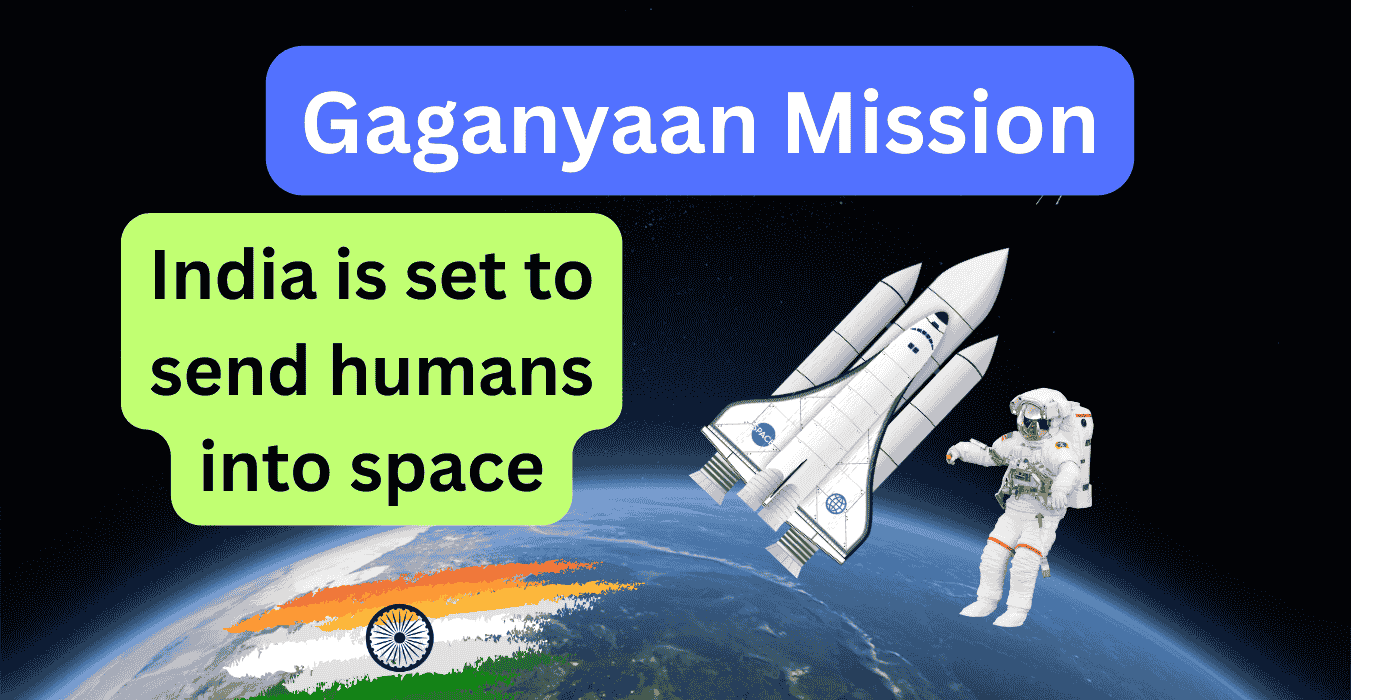All About Gaganyaan Mission
Hi friends, welcome to the article!
As part of the Gaganyaan Mission, India is set to send humans into space. Sunita Williams has already been to space as part of NASA. This article is based on the official press conference held by ISRO, which you can watch here: https://www.youtube.com/live/DJ0UTNk5bvw.
We’ll start by understanding what the Gaganyaan Mission is all about — India’s very first attempt to send humans into space.
We’ll then talk about why this mission is such a big deal, not just for India, but for the world. You’ll also get to know who’s leading the mission, the key people and organisations working behind the scenes, and what makes this mission truly unique.
We’ll walk through the important milestones — when Gaganyaan was announced, how far it has come, and when it’s expected to launch. We’ll also explore the cutting-edge technology and systems developed especially for this mission.
Curious about who’s going to space? We’ve got that covered too — we’ll introduce you to the Indian astronauts selected for the mission.
And finally, we’ll look at what comes after Gaganyaan — the exciting plans India has for space exploration in the coming years.
What is the Gaganyaan Mission?

What is the Gaganyaan Mission?
India’s Gaganyaan Mission marks the country’s first-ever attempt to send humans into space. It’s a big leap led by the Indian Space Research Organisation (ISRO), aiming to launch Indian astronauts—also called Vyomanauts—into Low Earth Orbit (LEO), about 400 km above Earth. The astronauts are expected to spend 1 to 3 days in space before returning safely through a splashdown in the sea.
To do this, ISRO will use its most powerful rocket—the LVM3, which has been specially adapted and “human-rated.” This means it has extra safety features, systems to monitor the health of the rocket in real time, and backup systems in case something goes wrong.
Why Is It Important?
Gaganyaan isn’t just another space mission—it means a lot for India. Here’s why:
Strategic Leadership
India will join a very small group of countries (USA, Russia, and China) that can independently send humans into space.
Technological Growth
This mission helps India build crucial space tech like life-support systems, human-rated rockets, and safe re-entry vehicles.
Commercial and Global Opportunities
Gaganyaan opens the door for India to enter the global market for space tourism, international collaborations, and deep space research.
Science and Research
It allows Indian scientists to carry out microgravity experiments that could help fields like medicine, material science, and engineering.
Youth Inspiration
It encourages more students to choose careers in science and engineering, helping grow India’s tech talent for the future.
Who Is Leading the Mission?
The mission is being led by Dr. V. Narayanan, Chairman of ISRO and Secretary of the Department of Space. He’s backed by a strong team of experts from different ISRO centers and other national institutions.
Key People Involved
- Raja Rajan – Head of Project Management for Space Transportation.
- Dr. Changan – Chairman of the Space Infrastructure Council.
- Mohan – Director, Liquid Propulsion Systems Centre.
- D.K. Singh – Director, Human Space Flight Centre.
- Binot – Project Director, Gaganyaan.
- K.B. Sriram – Director, LEOS (in charge of sensor tech, Gaganyaan Mission).
This is a joint effort by ISRO, DRDO, the Indian Air Force, the Indian Navy, and private space tech startups.
What Makes Gaganyaan Special?
Several things make this mission stand out:
India’s First Crewed Spaceflight
It will be the first time India sends humans to space on its own.
Human-Rated LVM3 Rocket
The rocket has extra safety measures, including over 2,000 real-time checks.
Crew Escape System
This is a life-saving mechanism to quickly carry astronauts to safety if something goes wrong during launch.
ECLSS
The Environmental Control and Life Support System will keep the astronauts comfortable—regulating air, temperature, and pressure inside the spacecraft.
Nine-Parachute Landing
To ensure a smooth sea splashdown.
Vyomitra Robot
This humanoid will fly on an uncrewed mission to mimic astronaut tasks and gather vital data.
SPADEX Docking Test
India successfully demonstrated autonomous docking, a key tech for space stations.
Timeline: From Start to 2027
- 1962 – India begins its space program
- 1980 – First Indian satellite launched
- 2018 – PM Modi officially announces Gaganyaan
- 2023-24 – Major ground tests and space docking experiments
- Q4 2025 – First uncrewed test flight
- 2026 – More uncrewed trials and safety tests
- Q1 2027 – First crewed space mission
Astronaut Selection and Training
Four pilots from the Indian Air Force were selected as potential astronauts. PM Modi introduced them in February 2024. Group Captain Subhanshu Shukla leads the team, with Group Captain B.B. Nair as his backup.
Their training is happening both in India and abroad. One of them is also expected to go to the International Space Station (ISS) in June 2025 with help from Axiom Space.
Key Technologies and Systems
Human-Rated Launch Vehicle (LVM3)
India’s heaviest rocket, now upgraded to carry humans safely. It has stronger structures, backup systems, and over 2,000 health checks during flight.
Crew Module (CM) and Service Module (SM)
The CM is where astronauts stay. It’s sealed, safe, and packed with life-support tech. The SM provides power, cooling, and helps with movement in space.
Environmental Control and Life Support System (ECLSS)
This tech controls oxygen, carbon dioxide, temperature, and humidity—making the space capsule livable for humans.
Crew Escape System (CES)
A safety rocket that pulls astronauts away in case of emergency. It works automatically and lands the crew safely in the sea using parachutes.
Parachute-Based Recovery
The spacecraft will land using nine parachutes in different stages to ensure soft and controlled splashdown.
Vyomitra: The Humanoid
A female-looking robot that will fly before human astronauts do. It will operate switches, speak with ground control, and monitor onboard systems.
Simulation and Crew Training
ISRO has built training centres to simulate launches, emergencies, and zero-gravity so astronauts are fully prepared.
SPADEX
India tested this autonomous docking system in space. It allows two spacecraft to connect on their own, a big step toward space station missions.
Thermal Protection and Strength
The crew module can survive extreme heat during reentry—up to 1,600°C. It’s been tested in wind tunnels, under vibration, and in loud environments.
Recovery and Tracking
The Indian Navy will help track and recover the module after splashdown. The team will handle medical checks, transportation, and safety right after landing.
What’s Next After Gaganyaan?
India is dreaming big:
- Indian Space Station by 2035.
- Manned Moon Mission by 2040.
- Chandrayaan-4 to bring lunar samples back to Earth.
- Deep Sea Mission to match Gaganyaan in complexity and vision.
ISRO also hosted the Global Space Exploration Conference (GLEX) in 2025, showing its growing leadership in global space talks.
Gaganyaan is more than just a mission—it’s a symbol of what India can achieve when science, vision, and teamwork come together. With more than 10,000 scientists, engineers, and defence experts working together, Gaganyaan is setting the stage for India’s future in space.
As we count down to early 2027, this mission reminds us that the sky is not the limit—it’s just the beginning.ll updates more detail as with its progress.
All About Amazon Project Kuiper Satellites
Discover more from Technical Guide
Subscribe to get the latest posts sent to your email.







Leave a Reply